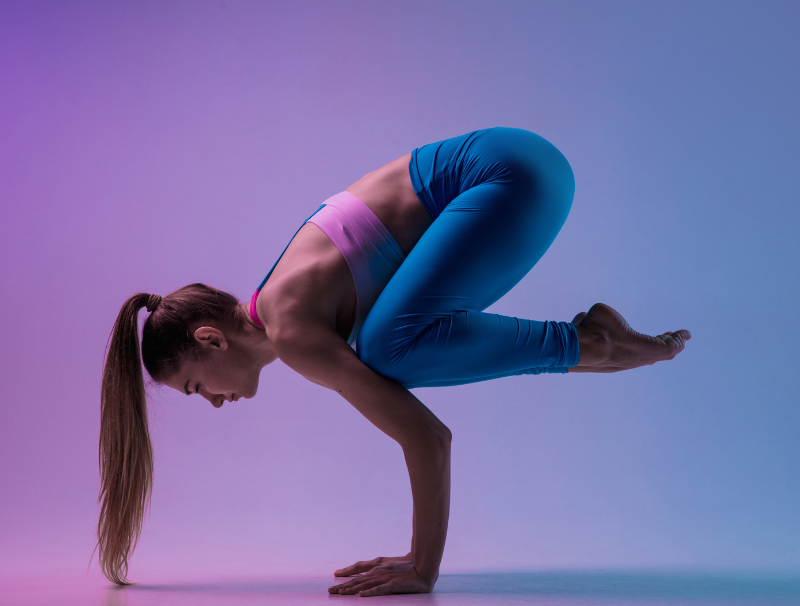Introduction
Do you worry about to learn how to do a handstand split and to achieve the perfect handstand split? This stunning gymnastic move combines strength, flexibility, and balance, making it a favorite among athletes and fitness enthusiasts. Not only does mastering the handstand split showcase your physical prowess, but it also brings numerous benefits, from improved body control to enhanced core strength. Ready to learn how? Let’s dive in to develop your skills to learn how to do a handstand split step by step!
Understanding the Basics
What is a Handstand Split?

A handstand split is a dynamic pose where you balance on your hands while your legs are extended in opposite directions. It’s a combination of a handstand and a front or middle split, requiring both upper body strength and lower body flexibility.
The Difference Between a Handstand and a Handstand Split

While a standard handstand involves keeping your legs together and pointed straight up, a handstand split requires you to split your legs apart. This added element increases the difficulty and demands greater flexibility and control.
Preparation and Warm-Up

Importance of Warming Up
Warming up is crucial before attempting any advanced physical activity. It prepares your muscles, increases your heart rate, and reduces the risk of injury.
Recommended Warm-Up Exercises
Start with light cardio to get your blood pumping. Follow this with dynamic stretches like leg swings, arm circles, and hip rotations. Pay special attention to your wrists, shoulders, and hips, as these areas are heavily involved in handstand splits.
Strength and Flexibility Training

Core Strength Exercises
A strong core is essential for balance. Incorporate exercises like planks, hollow holds, and Russian twists into your routine to build core stability.
Leg Flexibility Drills
To achieve a perfect split, work on your leg flexibility. Perform stretches such as lunges, hamstring stretches, and seated forward bends regularly.
Shoulder and Wrist Mobility
Your shoulders and wrists support your entire body weight during a handstand. Improve their mobility with stretches like shoulder dislocations, wrist circles, and downward dog poses.
Practicing the Handstand

Basic Handstand Techniques
Start by practicing against a wall. Place your hands shoulder-width apart and kick up into a handstand. Focus on engaging your core and keeping your body straight.
Common Mistakes to Avoid
Avoid arching your back or letting your shoulders collapse. Keep your fingers spread wide for better balance and control.
Developing the Split
Stretching Routines for Splits
Incorporate split-specific stretches into your routine. Perform both front and middle splits to increase your flexibility gradually.
Progression Techniques
Use props like yoga blocks or cushions to support your splits. Gradually lower the height of the props as your flexibility improves.
Combining Handstand and Split
Transitioning from Handstand to Split
Once comfortable with both handstands and splits, practice transitioning between the two. Start in a handstand and slowly move your legs into a split position, maintaining control throughout.
Maintaining Balance
Focus on keeping your core engaged and your gaze fixed on a point between your hands. Use your fingers to adjust and maintain balance.
Advanced Tips and Tricks
Improving Form and Alignment
Ensure your body is aligned properly. Your hips should be square, and your legs should be straight. Engage your glutes and inner thighs to keep your legs from wobbling.
Tips for Staying Balanced Longer
Practice regularly and use breathing techniques to stay calm. Over time, you’ll build the endurance to hold the handstand split for longer periods.
Using Props and Support
Benefits of Using Props
Props can help you gradually build strength and flexibility. They provide support and reduce the risk of injury during practice.
Types of Props to Consider
Consider using yoga blocks, resistance bands, or a padded mat. These tools can aid in stretching and provide stability during your practice.
Safety and Injury Prevention
Common Injuries and How to Avoid Them
Handstand splits can strain your wrists, shoulders, and hamstrings. Prevent injuries by warming up properly, using correct form, and listening to your body.
Tips for Safe Practice
Never force your body into a position. Progress slowly, and if you feel pain, stop immediately and rest. Consult a professional if you experience persistent discomfort.
Progress Tracking

How to Measure Your Progress
Take photos or videos of your practice sessions. This visual feedback helps you see your improvements and identify areas needing more work.
Setting Realistic Goals
Set achievable milestones. Celebrate small victories, like holding a handstand for a few seconds or reaching a new depth in your split.
Techniques for Improving Concentration
Practice mindfulness and meditation. These techniques enhance your focus and help you remain calm during practice.
Incorporating Handstand Splits into Your Routine
Daily Practice Schedule
Consistency is key. Dedicate time each day to practice handstands, splits, and flexibility exercises.
Integrating with Other Exercises
Combine handstand splits with other workouts like yoga, pilates, or strength training to create a balanced fitness routine.
Conclusion
Mastering the handstand split is a rewarding journey that combines strength, flexibility, and balance. By following the steps outlined in this guide, you can steadily progress towards achieving this impressive skill. Remember to practice consistently, stay patient, and celebrate your milestones along the way. Happy practicing!
FAQs
What if I can’t do a split yet?
Don’t worry! Start with basic stretching exercises and gradually increase your flexibility. With consistent practice, you’ll get there.
How long does it take to learn a handstand split?
It varies for everyone. Some may achieve it in a few months, while others might take longer. Consistent practice is key.
Can anyone learn to do a handstand split?
Yes, with dedication and proper training, most people can learn to do a handstand split. It’s important to listen to your body and progress at your own pace.
What should I do if I feel pain while practicing?
Stop immediately if you feel pain. Rest and consult a professional if the pain persists. Pushing through pain can lead to injuries.
How often should I practice to see results?
Aim to practice daily, even if it’s just for a few minutes. Consistency is crucial for making progress.





